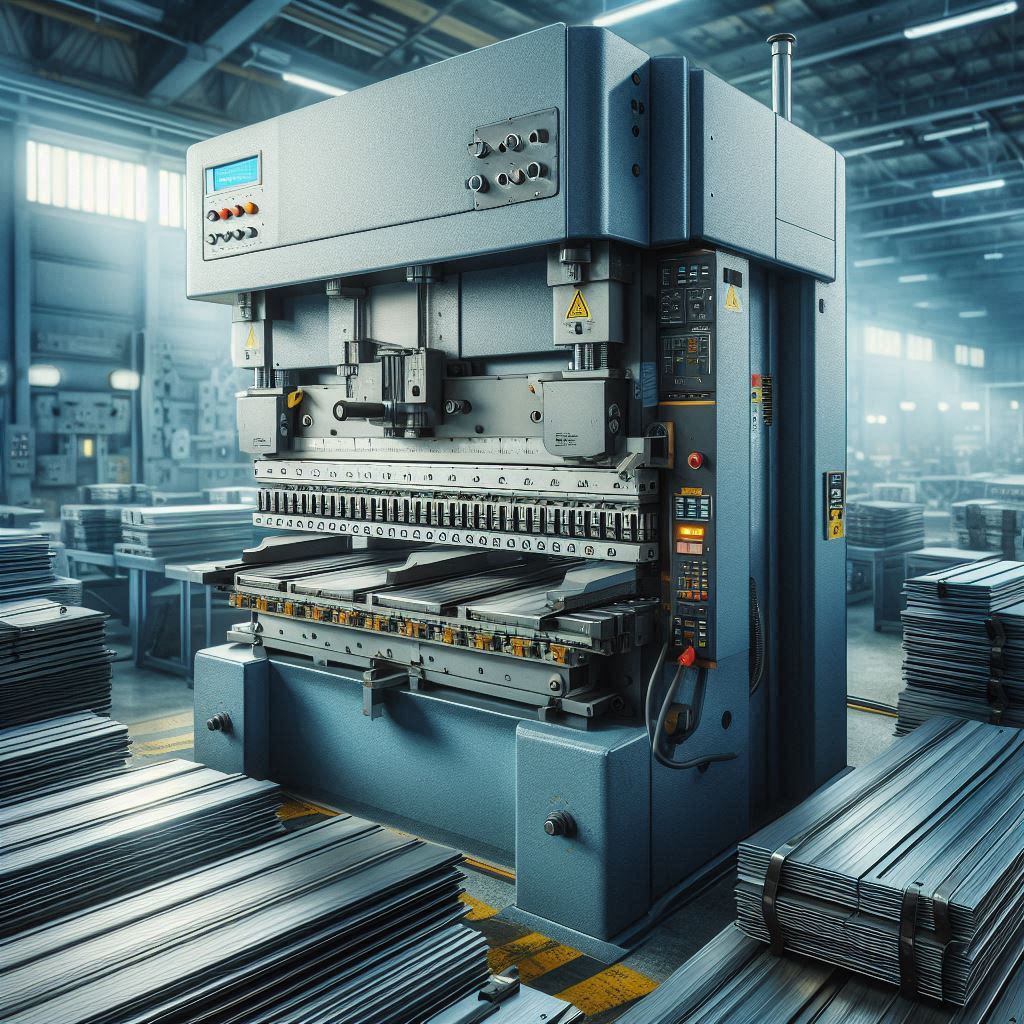
The sheet metal press brake machine constitutes a class of major metal fabrication tools that are used mainly for bending and precision-shaping sheets of metal. This machine bends metals with the utmost accuracy and efficiency whether used for automotive, aerospace, construction, or industrial applications. With the advent of CNC technology (Computer Numerical Control), an automatic high-speed error-free bending operation has been made possible in most of the modern press brakes, thereby removing any tinge of doubt on the importance of this machine in modern manufacturing processes.
Working Principle of a Press Brake Machine
The press brake bends metal sheets into required shapes by applying pressure using a punch and die. This is the principle: the machine produces pressure against the sheet in a certain axis, thus bending it to a certain angle. The press brakes are available in different types, and these are suited for a diversity of industrial applications.
Types of Press Brake Machines
There are multiple forms of press brakes for a myriad of applications. Mechanical press brakes utilize a flywheel and clutch system and can thus reach maximum speeds and are suited for bending thin to medium metal sheets repetitively. Hydraulic presses will have a controlled cutting pressure exerted by hydraulic cylinders; thus, heavy-duty applications, especially for thicker materials, will be better accommodated. CNC press brakes are computerized for an automated and precise bending, leaving very little room for the human error factor when enhanced efficiency comes into picture, especially in scenarios of mass production. Electric press brakes are operationally friendly since they embrace servo-electric motors; their energy-efficient operations ensure low maintenance and environmentally sound operation, combined with unique precision.
Benefits of the Sheet Metal Press Brake Machining Process
1. High Precision and Accuracy
Particularly with CNC press brakes, accuracy and precision ensure that any bend is achieved to a minimum of material waste and maximum consistency and high quality.
2. Efficient and Productive
Press brakes that are modern can bend many sheets simultaneously, resulting in decreased production time and increased efficiency.
3. Wide Application Range
Press brakes are found in many industries, bending metals precisely for different purposes. The automotive sector utilizes them for manufacturing car body parts and frames. The aerospace industry uses them for the production of HP aircraft components. Construction requires press brakes in creating metal frames, beams, and structural supports. The electronics industry also finds press braked colored products useful in the fabrication of robust metal casings and enclosures for their electronic gadgets.
4. Economical Operations
The overheads of bending are diminished with the help of automated press brakes, thereby acting economically in saving labor and ultimately the material wastage that would have occurred.
5. Safety Features
New press brake machines enhance safety with many advanced features such as light curtain sensors, two-hand control, and emergency stop buttons.
When investing in a press brake, extra consideration was given to factors such as material thickness, bend lengths, automation options, and after-sale support to maximize efficiency and outcome in a hands-on production area.
Conclusion
The sheet metal press brake machine has revolutionized metal fabrication to deliver precision, efficiency, and versatility. Whether small or large-scale production, investing in a good press brake will secure great bending opportunities, cost savings, and high productivity on the part of the owner. Keeping in sight modern times, CNC and electric presses, with the fastest bent processes, safer functions, and extremely efficient performance, have led to this long-awaited change; the dreamed-of days of metal bending have finally come.





Leave a Reply